Leachianus geckos (Rhacodactylus leachianus), a species more commonly known as “Leachie Geckos” are a variety of reptile that has won the heart of many keepers within the reptile hobby, and for good reason. This beautifully large and vocal reptile species is an excellent choice for beginner and expert keepers alike.
While fussy in temperament at times, the quirky personalities of these geckos make them fun companions for their long-lived lives.
Are you considering journeying into the world of Leachie Gecko care? Or do you just love the species and want to learn more about them? Regardless of your reasoning, this article will be your ultimate guide to everything you need to know about caring for and keeping these amazing geckos.
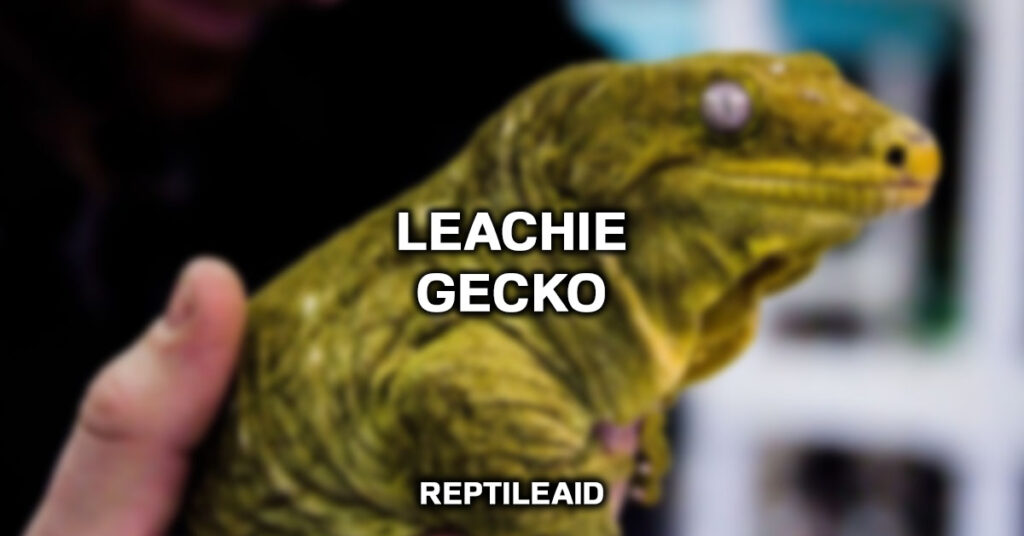
A Guide to Leachie Geckos
Leachie geckos make a wonderful pet for reptile keepers of all types, but they require regular upkeep and can be a bit finicky sometimes.
Before you bring home your new Leachie Gecko there is an abundance of important information to consider to ensure your gecko is happy and well taken care of. In particular, consider the following information about how to keep your Leachianus Gecko healthy, as well as how to handle any behavioral or temperamental quirks that may arise.
What is a Leachie Gecko?
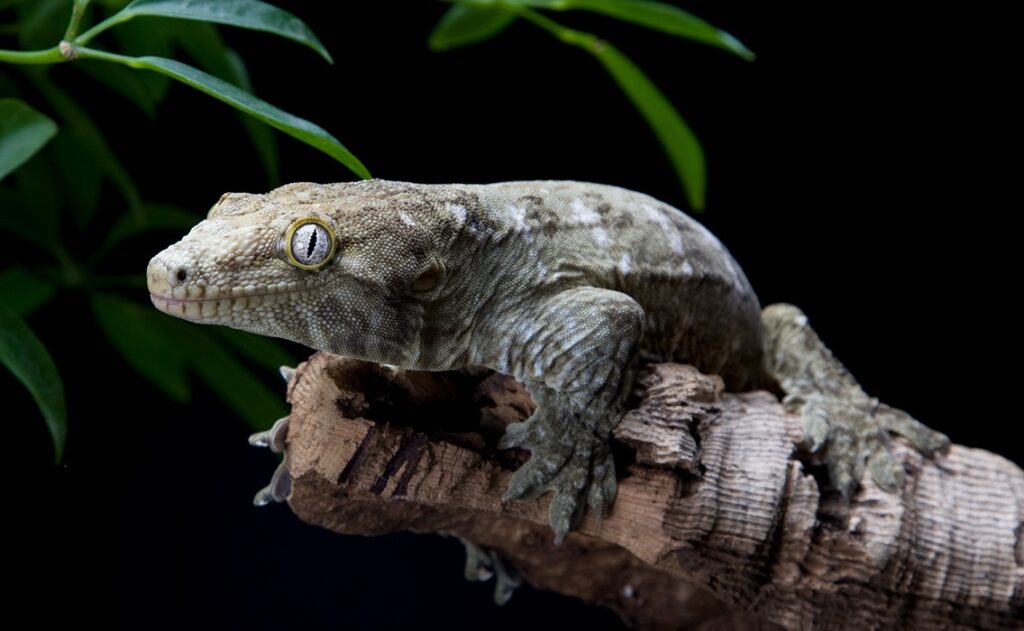
A Leachianus Gecko, more commonly known as a “Leachie Gecko” or the New Caledonia Giant Gecko, is a variety of geckos belonging to the family Diplodactylidae. This makes Leachie Geckos a close relative of crested geckos (Correlophus ciliatus), another common pet in the reptile trade.
The Leachie Gecko is the largest species of gecko currently known today. These geckos are originally native to the southern and eastern portions of New Caledonia, a group of small islands in the South Pacific.
However, this species has become a popular pet among reptile owners worldwide due to its unique appearance and the variety of sounds they produce.
How Do You Keep Leachie Geckos Healthy?
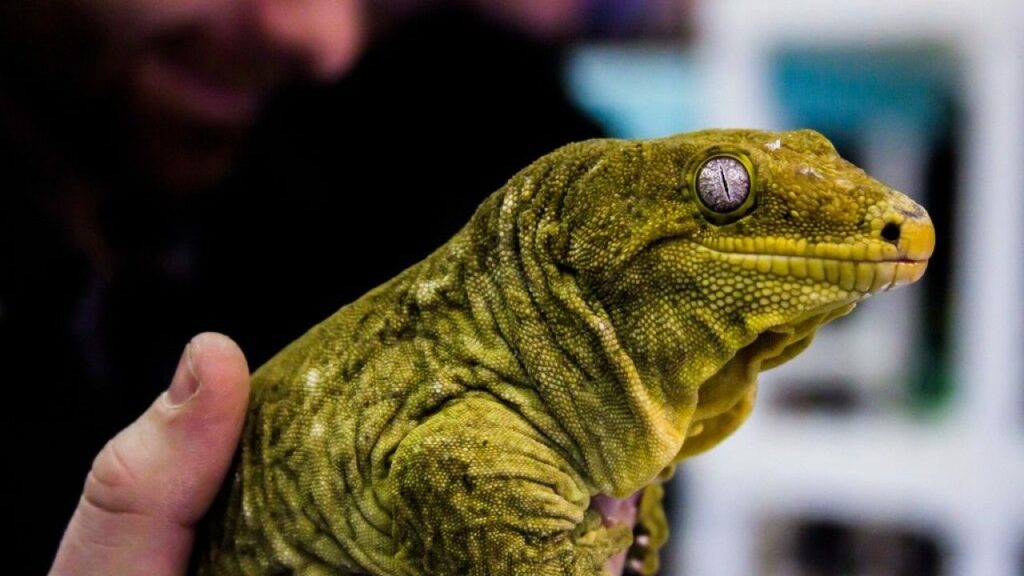
A well-taken care-of Leachie Gecko can be expected to live up to 20 years in captivity. Like any pet you may wish to add to your home, your gecko’s quality of life will directly be determined by the attention you put into their environment, diet, and general handling. This makes it especially important to practice proper care to ensure that your gecko is able to live a long and healthy life.
A proper diet is essential to ensure the overall health of your gecko, as Leachies have a tendency to be picky eaters. When in the wild, Leachies are known for eating everything from insects and spiders to small animals, fruit, nectar, and sap. These food sources from their natural habitats can be difficult to fully replicate in captivity, however.
Some Leachie Geckos will take well to being offered feeder insects and animals like crickets, roaches, or mouse pups. Others will get defensive or feel threatened if you attempt to do so.
As a special treat, your gecko can safely eat a wide variety of fresh fruits.
These fruits include apples, bananas, blackberries, blueberries, grapes, peaches, pears, and raspberries, among many others. It is recommended that you only give fruit to your Leachianus Gecko every other day as they still need to consume feeder animals to round out their omnivore diet.
Nutritional deficiencies are something to watch out for, as is the case with most captive reptiles. A simple way to avoid this is to alternate dusting their feeder insects with a calcium powder and a multivitamin powder to add in the missing nutrients they need.
These supplements are readily available online or at your local pet store. Be sure to alternate these supplements, and do not give both on the same day.
Expert Tip: When in doubt, Leachies can eat the same diet as crested geckos. Crested geckos tend to eat pre-made food that consists of a dry powder that is mixed with water. Given that these two species are close relatives, it is safe for you to feed crested gecko food to your Leachie.
This food is readily available at your local pet store or online. It is largely mess-free and a perfect option for owners who get a bit squeamish at the idea of feeding their geckos live insects.
Enclosures should be spot-cleaned daily, to clean up feces and food waste that may be present in the enclosure. However, you should also expect to deep clean a Leachie gecko’s tank about once a month. This deep cleaning will help to eliminate any bacteria, mold, or mildew that could arise in the enclosure that could harm your pet.
Choosing the Right Enclosure
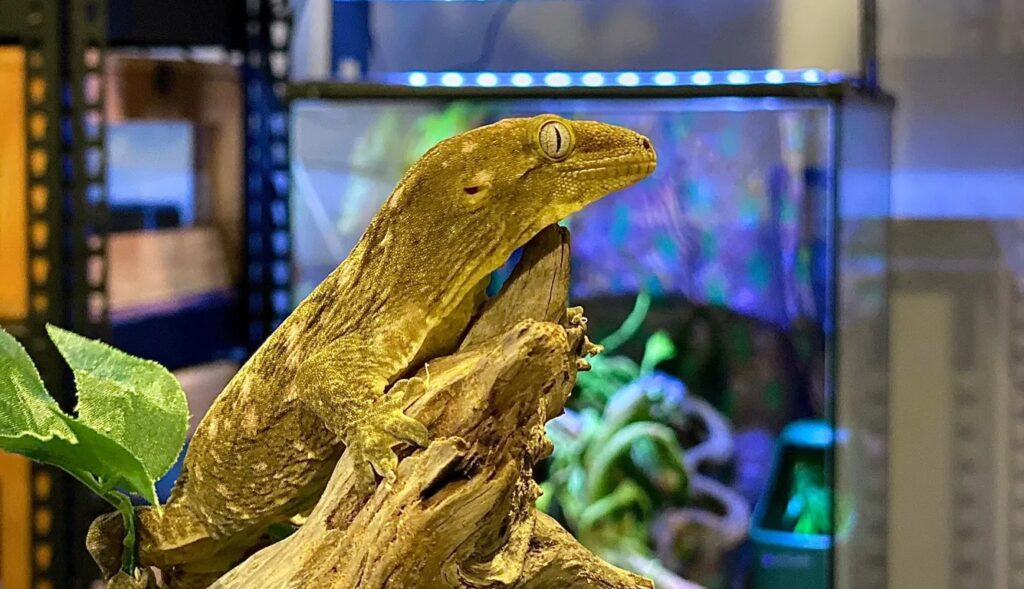
Like most reptiles that are kept as pets. Leachies have their own unique needs to consider when choosing their enclosures. However, one perk of raising Leachianus Geckos is that their enclosure needs are easier to manage than many other reptiles, as they don’t require special lighting to stay happy and healthy in their new home.
Space for climbing is a must. In their natural habitats, Leachie Geckos are largely arboreal – meaning that they live most of their lives up in the highest part of trees. This makes them extra good climbers and means that they need to be housed in enclosures that are tall enough to replicate this environment as closely as possible.
You will want to be sure to provide plenty of structures to climb on and places to hide as needed. Humidity levels are important. Since Leachie Geckos are native to tropical climates, they require environments that have similar humidity levels to their natural habitat in order to stay healthy.
It is recommended that caretakers mist the walls of the gecko’s enclosure daily to help keep the proper moisture levels while keeping the rest of the space only slightly damp. Too much or too little moisture can negatively affect the overall health of the gecko.
Regulate the temperature to an average of 75 degrees Fahrenheit. This is the preferred temperature Leachies enjoy. You will want to create a warm basking spot that reaches up to 82 degrees Fahrenheit, using a heat emitter or some form of a heat lamp.
Avoid keeping enclosure lights on at night. As a nocturnal species, nighttime lights can stress Leachie Geckos which may cause them to hide instead of venturing out to eat explore or otherwise interact with their enclosure. It may be easiest to choose lights that come with an automatic timer, to turn off once the sun goes down.
Leachie Gecko Behavior and Temperament
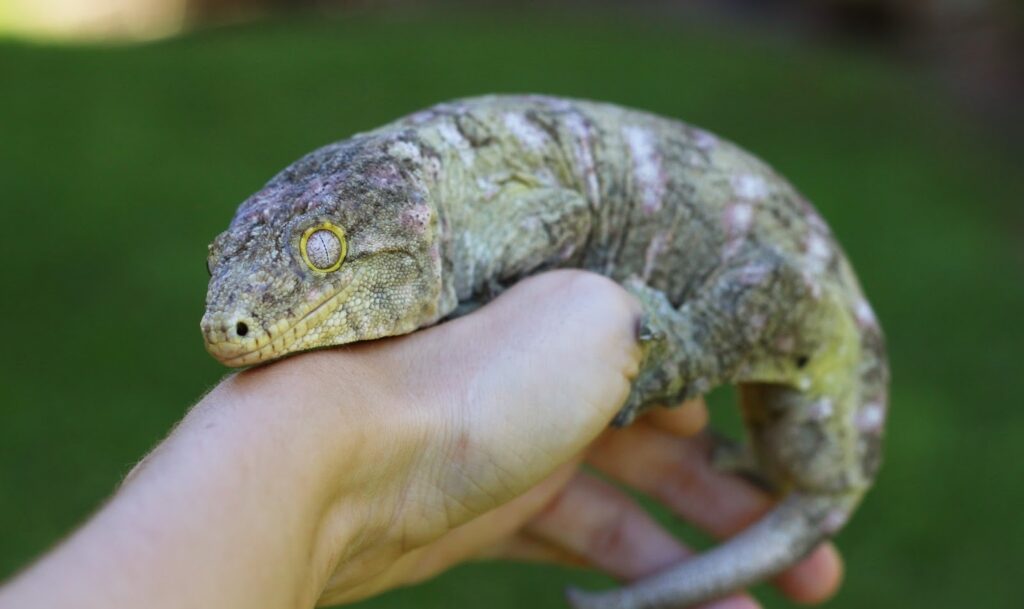
One of the reasons that Leachie Geckos are such a popular pet is the variety of unique behaviors that are not found in many reptile species.
Leachie Geckos are a nocturnal species meaning that they tend to be most active at night. This is the time of day when you are most likely to hear the sounds that Leachie Geckos are most famous for their characteristic growls, squeaks, and other vocalizations that make them popular as a pet.
Few reptiles available produce the level and variety of noises that Leachie geckos are known to produce. Leachie Geckos bask like most other reptiles. This is because they thermoregulate, meaning that they control their body temperature using external heat sources. This makes it essential that they have a spot in their enclosure that serves as a heat source.
Leachie Geckos do not necessarily need light in addition to their heat, however. Regardless, a gecko’s basking time is an excellent chance to see them while they are active at night
Regular handling is essential. These geckos are known to have more of a difficult temperament to work with, and they can often be aggressive and defensive of their territories.
An aggressive gecko may bite or jump at anything that comes near its space, whether it be a human or even another gecko. Because of this, it is strongly recommended that caretakers handle Leachie geckos a considerable amount once they reach about 2 months old.
Avoid handling new hatchlings much earlier, as they do still need time to adjust to their environment and their new enclosure.
Proper handling is important as well. Try not to scare your gecko as you approach them. Leachies should be removed from their enclosure by gripping them gently behind the neck while you support their body and legs with your other hand. Be sure to not grip them too tightly, but don’t let them escape either.
Spend approximately 15-20 minutes a day handling their young Leachie Gecko, the pet’s temperament will greatly improve. This extra handling will help your pet become more accustomed to being handled and to having humans near their enclosures.
Beware of defense mechanisms. An important behavior to note is that when stressed, these geckos can activate a defense mechanism that involves spontaneously shooting liquid waste at whatever threat they believe is in their immediate vicinity.
This can be a very unfortunate and smelly surprise for any caretakers who startle or try to handle a Leachie Gecko that is not used to being touched by humans. This defensive behavior is yet another reason why it is important to handle your gecko regularly.
Their bite can hurt. Leachie Geckos have a big head and a correspondingly strong jaw. Getting bitten by an aggressive or fearful Leachie can be a bit painful and you should try to avoid it. If handling a particularly feisty gecko, try wearing thick gloves to avoid opportunities for the gecko to make contact with your skin.
But remember that frequent handling can help to reduce these types of behaviors.
What do Leachie Geckos look like?
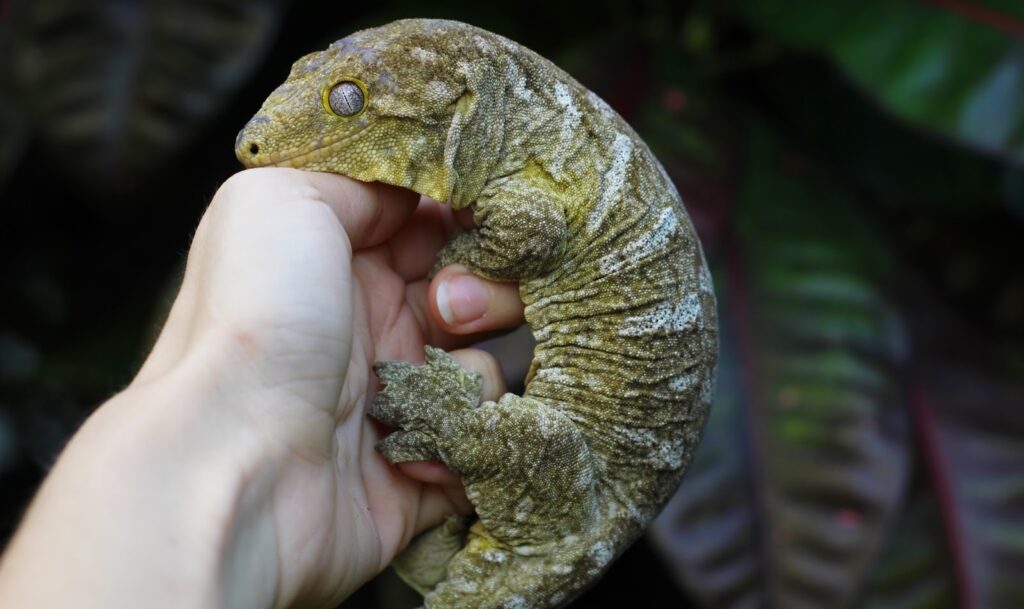
Leachie Geckos are a particularly large species of gecko, often measuring between 8 and 17 inches in length. However, when first hatched, baby Leachies are much closer to 4 inches in length. This means you will have ample opportunity to watch your new Leachie grow in size.
Quick Fact: Leachianus Geckos tend to have thick bodies and short tails, with a triangular head that at times may seem too large for its overall body size. The rest of its body tends to be thick.
Meanwhile, its skin is known to be loose and almost baggy which some have described as looking like the gecko is wearing baggy pajamas over their body.
There are subtle differences between male and female geckos. Male Leachie Geckos have femoral or “pseudo” pores that have a dark pit. Females, on the other hand, will not have a dark pit in their pores but instead will appear smooth or slightly dimpled. These pores can usually be spotted about 2-3″ down from their heads.
Males will also have a hemipenile bulge that contains their reproductive organs, found near their tails. Their tails can detach and regenerate. This can mean that you may see Leachie Geckos who are lacking their seats or have a tail that looks unusual compared to that of geckos who still have their original tale. This is not a significant cause of concern, as the detaching of seats is a defense mechanism meant to save the gecko from any perceived predators.
Their feet have adhesive pads called lamellas. These pads are made up of tiny hairs that increase the friction of their foot against any surface they may choose to climb. Because of this. Leachie Geckos have the ability to climb up the sides of glass enclosures giving their owners the unique opportunity to see their undersides and their feet.
Additionally, there are two main subspecies of the Leachie Gecko. The two species are the Pine Island Leachie Gecko (Rhacodactylus leachianus henkeli) and the Grand Terre Leachie Gecko (Rhacodactylus leachianus leachianus).
Each species is found in its own locale, and the main differences between the two are in their size and color. Grand Terre Leachies tend to be larger, while Pine Island Leachies tend to be more colorful.
What Colors of Leachianus Gecko Are Available?
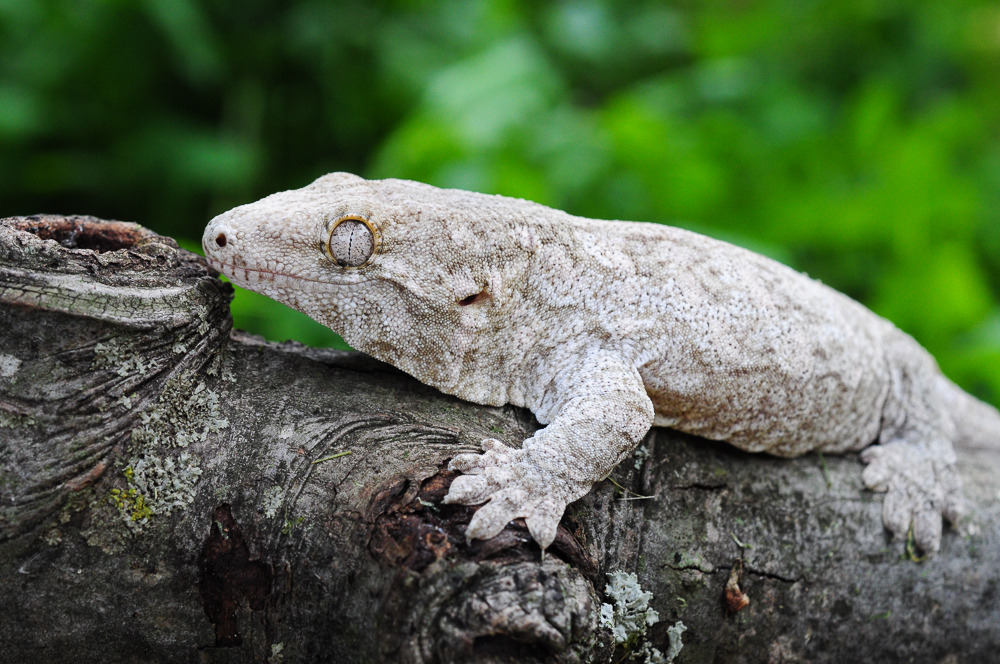
New Caledonia, the native home of the Leachie Gecko, is an island known for the tremendous amount of beautiful species that call it home. Its natural biodiversity has created a wide array of species in all manner of colors, and the Leachie Gecko is no exception.
Leachie Gecko colors depend on their subspecies. Pine Island Leachie Geckos are the more colorful variety and are often much more green than brown or gray. They may have a variety of colors blended across their skin, ranging from pink to orange, lavender, or white bands with black spots.
Grande Terre Leachies tend to be less vibrant. They are often more brown, gray, and black in color with corresponding stripes, bands, or even spots. However, even with subspecies, there can be a tremendous amount of variation from animal to animal.
Their colors are meant to act as camouflage. This is because Leachies live up on the tops of trees, where birds and other predators threaten their safety. Because of this. Leachies have skin colors and textures that are designed to mimic bark and other plant life found in the upper forests of their native habitats.
If you can’t see your Leachie immediately when looking in their enclosure, this means their camouflage is working!
In fact, some Leachie Geckos can subtly change the intensity of their colors. Many individuals can make their skin appear lighter or darker based on the amount of light around them. This is intended to help the geckos better imitate the colors around them so that they can blend into their environments with ease.
How Much Do Leachie Geckos Cost?
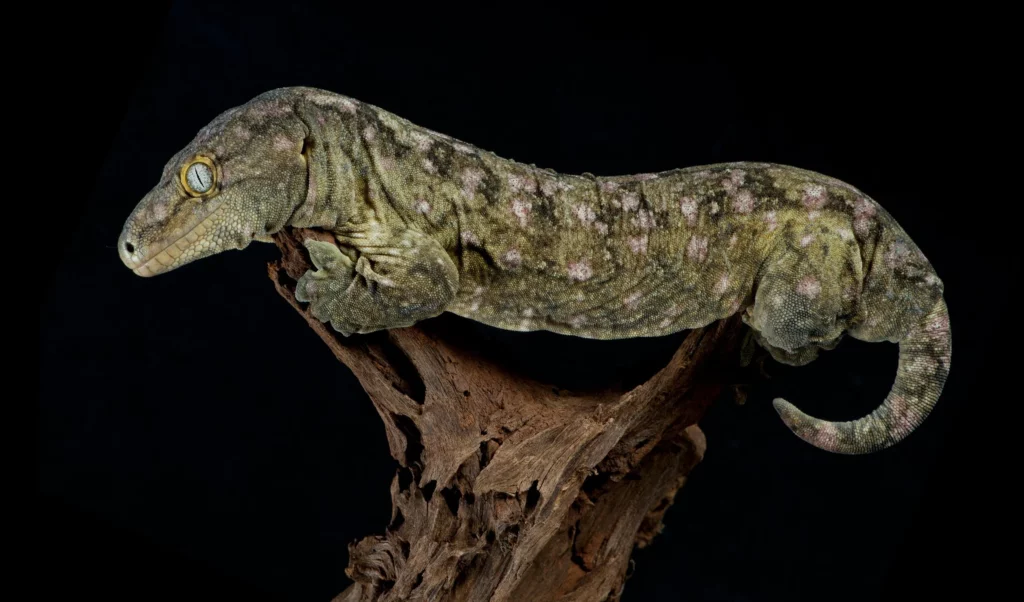
Like with any pet species, the cost of Leachie Geckos can vary from individual to individual depending on which subspecies you want and the overall availability in the market. Female Leachies will lay only two eggs at a time, with no more than eight eggs being laid in any given breeding season.
This can mean that captive-bred Leachie geckos can have periods where they are short in supply but high in demand.
Most Leachies will cost between $600 and $1000 US dollars. Leachie Geckos belonging to even rarer color and pattern types can cost considerably more, sometimes as much as several thousand dollars. The more highly colored and dramatically patterned a Leachie is. the more likely it will cost a higher amount to purchase.
Captive-bred Leachies are the only option for purchase. As it is now illegal to export these geckos from New Caledonia, potential buyers will have to rely entirely on the animals available through captive breeding and what supply is available domestically.
Even then, Leachies remain notoriously difficult to breed as they can be picky about their partners. Many breeders will spend considerable time and effort trying to find animals that make compatible pairs.
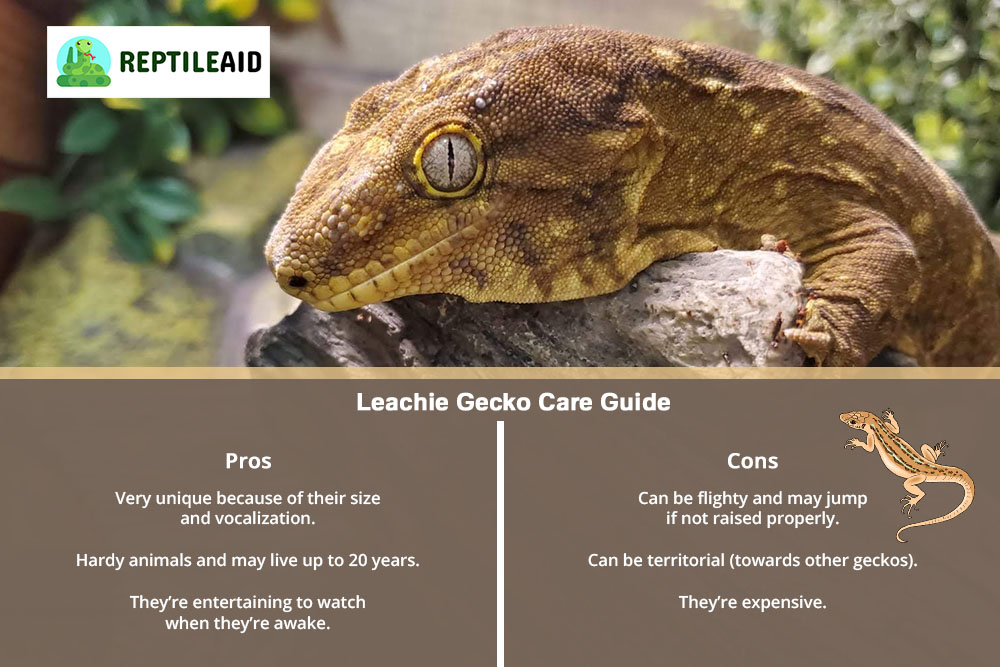
Did you know?
Local residents of New Caledonia, the native habitat of Leachie Geckos, often refer to these reptiles as “the devil in the trees” because of the unique, yet somewhat intimidating, growls they make when active at night. In any case, it’s safe to say that their growl is worse than their bite.
Final Thoughts
Leachianus geckos are a fascinating species of reptiles whose unique colors and vocalizations are guaranteed to bring joy to any household they may belong to. They can make fantastic pets for beginner and expert reptile handlers alike.
Remember that while they can be fussy eaters and sometimes can be temperamental to handle, with patience and persistence you can establish a trusting bond with your Leachie Gecko.
Above all else, remember that if you do your research in advance and give your gecko proper care, it is highly likely that this species will make a fun companion for decades to come.
